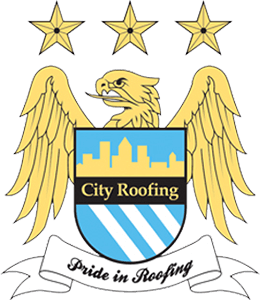What Is a Built-Up Roof? Types, Features & Benefits
Although Built-up Roofing (BUR) first gained acceptance in the 1930s, this roofing system has been in the United States for the past century. In a world where building technology changes every day, BUR has remained the popular choice for flat roofing. If you’re considering this type of roofing, you have come to the right place. Keep reading to find out all there is to know about built-up roofing.
What Is a Built-Up Roofing System?
Built-up roofing is flat roofing composed of alternate layers of bitumen and a piece of reinforcing fabric. The top layer is usually finished with an aggregate, such as gravel. The layers provide a continuous sealant, eliminating the need for a slope to shed off the water. Common bitumen material used is asphalt and tar. Bitumen is applied heated or cold. These different approaches have led to the following types of Built-up Roofing (BUR).
- Hot BUR – The bitumen is heated so that it liquefies during installation. This is the technique we recommend.
- Peel and Stick BUR- The Base, and cap sheet have an adhesive on the rolls then when applied create a water tight seal. This type of system is great for crickets, patio covers, or areas of a roof with a low slope.
What Are the Benefits of Built-Up Roofing?
The following are some of the reasons why contractors and commercial building owners prefer built-up roofing.
- Waterproof – Water damage can open up your building to other problems like mold. The alternate layers of base, ply, and gravel are strongly bonded with a flood coat of hot tar.
- Durability – A properly built BUR can last for up to 25 years. There is no risk of fire, and it can withstand extreme winds. It also helps that BUR is easy to repair when something goes wrong. Repairing ripples, cracks, and blisters is often simple and quick.
- Low Maintenance – Yes, you will need to maintain your roof but not as much as traditional roofs. Generally, you will need to reinspect every five or six years. However, it would be best if you still had the roof inspected yearly to catch any problems early.
- Fire Protection – Built-up roofing is known for its fire protection. The surfacing material is usually coated with fire-retardant properties. This feature can be useful in commercial buildings that are a greater risk of catching fire.
Why Is a Built-up Roof Considered Multi-Ply Roof?
Roofing systems are broadly classified into single-ply and multi-ply roofs. As the name suggests, a single-ply roof is only made of one layer of material. A multi-ply roof is composed of different layers. Built-up roofing falls in the multi-ply category due to the alternating layers of bitumen, fabric, and coating. In general, built-up roofs have at least three layers.
Why Is Multi Ply Better Than Single Ply?
Multi-ply roofing is better than single-ply roofing for the simple fact that more layers are stronger than one. The overall strength is a product of each layer. Multi-ply roofing systems can get as thick as 300mm. This is thicker than the thickest single-ply membrane. Single ply roofing also tends to break under pressure. Their inability to withstand high pressure means their lifespan is relatively short.
Most single-ply roofing lasts for about 15 years compared to multiple-ply roofing, which can stretch to 25 years. Lastly, maintaining single ply can be problematic since it can not withstand heavy foot traffic. It is never a good idea to walk on a single-ply roof..
Are BUR Multi-Ply Roofs Energy Efficient?
Built-up roofing has come a long way. Modern building technology ensures that this roofing system is as energy efficient as any other. Today, built-up roofs can incorporate an insulation layer for added protection. A final coating can be added that is made of materials with high reflexivity to reduce the heating effect of the sun. Manufacturers are also creating cool modified bitumen and BUR products for maximum efficiency. Some of these products can lower your roof temperature by an impressive 70F, unlike traditional black asphalt. The results are less energy used in cooling during summer and heating during winter.
Final Thoughts
Hopefully, you now have answers to most of your questions about built-up roofs. Your choice of roof is as important as the foundation of the building. If you get it wrong, it could cost you a fortune in maintenance. The main factors to consider are longevity, maintenance, energy efficiency, and aesthetics. Built-up roofing ticks all the boxes if you’re building a commercial building. With City Roofing and Maintenance, we have all the experience and equipment needed to build durable, weather-proof built-up roofs. Call us today at (949) 500-3980 for a free estimate!
